Ditapis dengan

Enterprise Risk Management Pendekatan Praktis
- Edisi
- -
- ISBN/ISSN
- 979-98918-8-4
- Deskripsi Fisik
- 90 p
- Judul Seri
- -
- No. Panggil
- SC TXT ENT a
- Edisi
- -
- ISBN/ISSN
- 979-98918-8-4
- Deskripsi Fisik
- 90 p
- Judul Seri
- -
- No. Panggil
- SC TXT ENT a

Manajemen Risiko ISO 31000: 2018
- Edisi
- -
- ISBN/ISSN
- 978-602-05-1234-1
- Deskripsi Fisik
- 359 p
- Judul Seri
- -
- No. Panggil
- SC TXT MAN l
- Edisi
- -
- ISBN/ISSN
- 978-602-05-1234-1
- Deskripsi Fisik
- 359 p
- Judul Seri
- -
- No. Panggil
- SC TXT MAN l
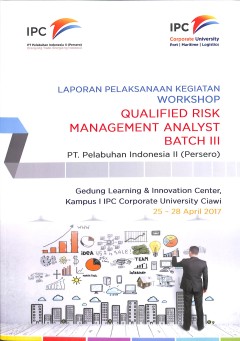
Laporan pelaksaan kegiatan workshop qualified risk mamangement analyst Batch…
- Edisi
- 2017
- ISBN/ISSN
- -
- Deskripsi Fisik
- 12 p.
- Judul Seri
- -
- No. Panggil
- IPC REP 2017 QUA p C.1
- Edisi
- 2017
- ISBN/ISSN
- -
- Deskripsi Fisik
- 12 p.
- Judul Seri
- -
- No. Panggil
- IPC REP 2017 QUA p C.1
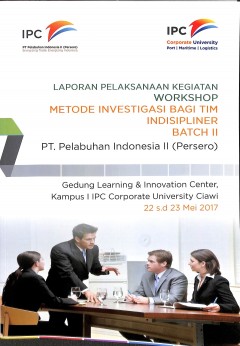
laporan keiatan workshop methode investigasi bagi tim indisipliner batch II 2…
- Edisi
- 2017
- ISBN/ISSN
- -
- Deskripsi Fisik
- 13 p.
- Judul Seri
- -
- No. Panggil
- IPC REP 2017 WOR p C.1
- Edisi
- 2017
- ISBN/ISSN
- -
- Deskripsi Fisik
- 13 p.
- Judul Seri
- -
- No. Panggil
- IPC REP 2017 WOR p C.1
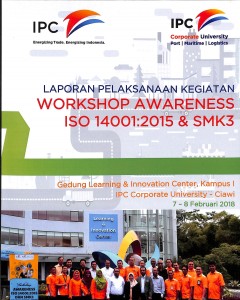
Laporan pelaksanaan kegiatan workshop awareness iso 14001:2015 & smk 7 - 8 fe…
- Edisi
- 2018
- ISBN/ISSN
- -
- Deskripsi Fisik
- 1 halaman buku
- Judul Seri
- -
- No. Panggil
- IPC REP 2018 WOR p C.1
- Edisi
- 2018
- ISBN/ISSN
- -
- Deskripsi Fisik
- 1 halaman buku
- Judul Seri
- -
- No. Panggil
- IPC REP 2018 WOR p C.1

Modern Maritime Law Volume 2 : Managing Risks and Liabilities
The second volume tackles the substantive maritime law with a particular emphasis on risk and liabilities, and analyses issues of contract, tort and criminal law, causation and remoteness of damages. Key features of Volume Two include: An analysis of the regulatory regime, new EU and IMO safety at sea legislation, reforming practices for flag states and recognise…
- Edisi
- 3rd ed.
- ISBN/ISSN
- 978-0-415-83906-8
- Deskripsi Fisik
- lxxxvi, 932p. ; 25cm.
- Judul Seri
- -
- No. Panggil
- MR MAN m

The influence of relational competencies on supply chain resilience: a relati…
The purpose of this research is to explore the resilience domain, which is important in the field of supply chain management; it investigates the effects relational competencies have for resilience and the effect resilience, in turn, has on a supply chain’s customer value.
- Edisi
- Vol. 43 No. 4, 2013
- ISBN/ISSN
- -
- Deskripsi Fisik
- 24 p.
- Judul Seri
- The purpose of this research is to explore the resilience domain, which is important in the field of supply chain management; it investigates the effects relational competencies have for resilience an
- No. Panggil
- ATC LO MAR t
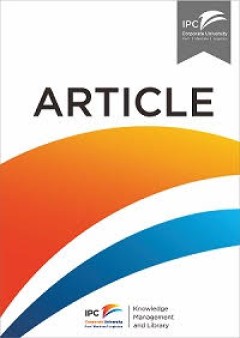
Portfolio of port-centric supply chain disruption threats
- Edisi
- -
- ISBN/ISSN
- -
- Deskripsi Fisik
- -
- Judul Seri
- International Journal of Logistics Management
- No. Panggil
- ATC MG LOG p
- Edisi
- -
- ISBN/ISSN
- -
- Deskripsi Fisik
- -
- Judul Seri
- International Journal of Logistics Management
- No. Panggil
- ATC MG LOG p

Risk Management in maritime logistics and supply chains
- Edisi
- pp. 117-131
- ISBN/ISSN
- -
- Deskripsi Fisik
- -
- Judul Seri
- Maritime Logistics
- No. Panggil
- ATC MG LAM r
- Edisi
- pp. 117-131
- ISBN/ISSN
- -
- Deskripsi Fisik
- -
- Judul Seri
- Maritime Logistics
- No. Panggil
- ATC MG LAM r
Lloyd's practical shipping guides risk management in port operations, logisti…
- Edisi
- -
- ISBN/ISSN
- 978-1-843-11655-4
- Deskripsi Fisik
- xiii, 412 p
- Judul Seri
- -
- No. Panggil
- TXT PO KHA l
- Edisi
- -
- ISBN/ISSN
- 978-1-843-11655-4
- Deskripsi Fisik
- xiii, 412 p
- Judul Seri
- -
- No. Panggil
- TXT PO KHA l

Modern Maritime Law Volume 1: Jurisdiction and Risks
The first volume tackles a wealth of complex jurisdictional aspects, ranging from the enforcement of maritime claims to a detailed analysis of the conditions of arrest of ships, including reconsideration of wrongful arrest, beneficial ownership, forum non-convenience and limitations upon the jurisdiction of the English courts. Key features of Volume One: Expert analysis of the very latest case …
- Edisi
- 3rd ed.
- ISBN/ISSN
- 978-0-415-83516-9
- Deskripsi Fisik
- liii, 370p. ; 25cm.
- Judul Seri
- -
- No. Panggil
- TXT MR MAN m

Heuristic estimation of container stacking and reshuffling operations under t…
This paper addresses a highly researched area, the reshuffling problem in ports, using a newparadigm-modified containership service order in light of credit risk assessment. Container stacking and reshuffling operations can cause ship delays and additional risk. In deep-sea terminals, outbound containers are tightly stacked according to the retrieval sequence. Due to lack of space, terminals st…
- Edisi
- VOL. 44, NO. 3, 373–391
- ISBN/ISSN
- 1464-5254
- Deskripsi Fisik
- 20 p.
- Judul Seri
- Maritime Policy & Management The flagship journal of international shipping and port research
- No. Panggil
- ATC LO GHA g

Maritime Logistics and Supply Chain Security
Despite a hangover from the worldwide economic crisis, international trade rebounded nicely with a record-level growth in late 2010. A sharp rise in international trade has sparked the international traffic growth. A majority of this traffic growth originated from maritime logistics which could move cargoes in large volume and at cheaper freight costs. Due to its cost-efficiency and easy acces…
- Edisi
- 2012
- ISBN/ISSN
- 978-1-78052-340-8
- Deskripsi Fisik
- 27 P
- Judul Seri
- Maritime Logistics
- No. Panggil
- ATC LO MIN m
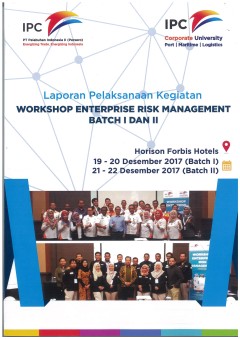
Laporan pelaksanaan kegiatan workshop enterprise risk management batch I dan …
- Edisi
- 19-22 Desember 2017
- ISBN/ISSN
- -
- Deskripsi Fisik
- 21 p. + atc., 21 cm.
- Judul Seri
- -
- No. Panggil
- IPC REP IND e
- Edisi
- 19-22 Desember 2017
- ISBN/ISSN
- -
- Deskripsi Fisik
- 21 p. + atc., 21 cm.
- Judul Seri
- -
- No. Panggil
- IPC REP IND e

Knowledge development and transfer in a mindful projectorganization
- Edisi
- Vol. 6 Iss 2 pp. 236 - 250
- ISBN/ISSN
- 1753-8378
- Deskripsi Fisik
- 18 p.
- Judul Seri
- International Journal of Managing Projects in Business
- No. Panggil
- ATC MG AND k
- Edisi
- Vol. 6 Iss 2 pp. 236 - 250
- ISBN/ISSN
- 1753-8378
- Deskripsi Fisik
- 18 p.
- Judul Seri
- International Journal of Managing Projects in Business
- No. Panggil
- ATC MG AND k

Enterprise risk management in international construction operations
- Edisi
- -
- ISBN/ISSN
- 978-981-287-549-5
- Deskripsi Fisik
- -
- Judul Seri
- -
- No. Panggil
- TXT MG Zha e
- Edisi
- -
- ISBN/ISSN
- 978-981-287-549-5
- Deskripsi Fisik
- -
- Judul Seri
- -
- No. Panggil
- TXT MG Zha e
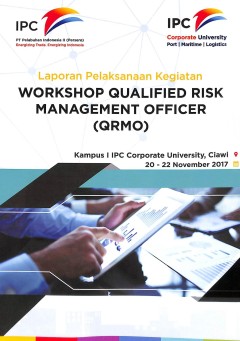
Laporan Pelaksanaan Kegiatan : Workshop Qualified Risk Management Officer (QRMO)
- Edisi
- 20 - 22 November 2017
- ISBN/ISSN
- -
- Deskripsi Fisik
- 15 p., + atc., 21 cm.
- Judul Seri
- -
- No. Panggil
- IPC REP 2017 QUA q
- Edisi
- 20 - 22 November 2017
- ISBN/ISSN
- -
- Deskripsi Fisik
- 15 p., + atc., 21 cm.
- Judul Seri
- -
- No. Panggil
- IPC REP 2017 QUA q

Supply chain logistics risks from the back room to the board room
Risks and uncertainties are ever more noted and factored into decision making today, and those stemming from supply chains are prominent in the competitiveness and viability of companies and organizations. The idea that every supply chain is made up of five internal chain/network constructs is presented, and these are physical, financial, informational, relational, and innovational. Further, fo…
- Edisi
- Vol. 34 No. 5, 2004
- ISBN/ISSN
- -
- Deskripsi Fisik
- 10 p.
- Judul Seri
- International Journal of Physical Distribution & Logistics Management
- No. Panggil
- ATC LO CAV s

Supply Chain Security Orientation: Conceptual Development And A Proposed Fram…
This paper aims to report on an exploratory study investigating supply chain security orientation (SCSO), a firm-level construct addressing companies’ multiple approaches toward mitigation of supply chain security breaches and supply chain risk management.
- Edisi
- Vol. 19 No. 1, 2008
- ISBN/ISSN
- -
- Deskripsi Fisik
- 27 p.
- Judul Seri
- The International Journal of Logistics Management
- No. Panggil
- ATC LO MIC s

Supply chain risks: a review and typology
Supply chain security (SCS), as a component of an organization’s overall supply chain risk management strategy, has become a critical factor for businesses and government agencies since September 11, 2001, yet little empirical research supports policy or practice for the field. Therefore, this paper develops and presents a categorization of SCS based on existing research. This categorization …
- Edisi
- Vol. 20 No. 1, 2009
- ISBN/ISSN
- -
- Deskripsi Fisik
- 34 p.
- Judul Seri
- The International Journal of Logistics Management
- No. Panggil
- ATC LO GOL s

Supply chain risk management: a new methodology for a systematic literature r…
Supply chain risk management (SCRM) has recently gained increasing attention in the supply chain context, both from the practitioners’ perspective and as a research area. Given the relevance of the topic, the aim of the present paper is to present a focused literature review, investigating the process of knowledge creation, transfer and development from a dynamic perspective within the contex…
- Edisi
- Volume 17 · Number 4 · 2012 · 403–418
- ISBN/ISSN
- -
- Deskripsi Fisik
- 19 p.
- Judul Seri
- Supply Chain Management: An International Journal
- No. Panggil
- ATC LO STR c

Aligning product design with the supply chain : a case study
The purpose of this paper is to investigate the alignment between product design and the supply chain and to identify how this alignment impacts on a firm’s supply chain responsiveness and resilience.
- Edisi
- Vol. 17 Iss 3 pp. 323 - 336
- ISBN/ISSN
- 1359-8546
- Deskripsi Fisik
- 16 p.
- Judul Seri
- Supply Chain Management: An International Journal
- No. Panggil
- ATC LO KHA a

Uncertainty, the critical basis of risk management
The objective of this paper is to scan the extent of uncertainty and hesitation in the development of plans and strategy.
- Edisi
- VOL. 11 NO. 6 2009, pp. 42-55
- ISBN/ISSN
- 1463-6689
- Deskripsi Fisik
- 16 p.
- Judul Seri
- Foresight
- No. Panggil
- ATC MG RIC u
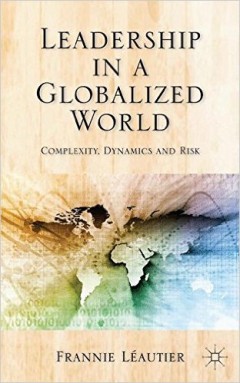
Leadership In A Globalized World: Complexity, Dynamics, And Risks
This book investigates key issues facing leaders in increasingly complex decision-making environments as a result of globalization. It presents a synthesis and interpretation of academic research in multiple disciplines and integrates it into a practical approach that is readily useable by leaders in government, corporations, and civil society.
- Edisi
- -
- ISBN/ISSN
- 978– 1– 137– 43120–
- Deskripsi Fisik
- xii, 295 p
- Judul Seri
- -
- No. Panggil
- TXT LE LEA l
A Handbook for supply chain risk management : case studies, effective practic…
The International Supply Chain Risk Management (ISCRIM) network is a team of researchers and practitioners engaged in analyzing, developing, and disseminating evidence and practices related to the effective and efficient management of supply chains and their associated risks. The international network was founded in 2001 by a small group of active researchers from the UK, U.S., and Sweden. The…
- Edisi
- -
- ISBN/ISSN
- 978-1-60427-038-9
- Deskripsi Fisik
- xviii, 2530 p.
- Judul Seri
- -
- No. Panggil
- TXT LO ZSI h

A Call To Action: The National and Global Implications Of The Year 2000 Embed…
Acknowledges the potential problems the year 2000 may cause to computer software and hardware, but emphasises the need to understand fully and acknowledge the challenges and threats posed by date sensitive embedded systems. Describes embedded systems and the reasons why they have been generally ignored in the discussions about the year 2000. Discusses the potential disasters and the effo…
- Edisi
- Vol. 12 Iss 3 pp
- ISBN/ISSN
- 0957-6053
- Deskripsi Fisik
- 8 p
- Judul Seri
- Logistics Information Management
- No. Panggil
- ATC LO GOR a

Managing risks in the supply chain using the AHP method
The aim of the research is to provide a method to evaluate supply chain risks that stand in the way of the supply chain objectives.
- Edisi
- Vol. 17 No. 1, 2006
- ISBN/ISSN
- -
- Deskripsi Fisik
- 29 p.
- Judul Seri
- The International Journal of Logistics Management
- No. Panggil
- ATC LO BOR m

Managing the product design-supply chain interface: Towards a roadmap to the …
The purpose of this paper is to investigate the interface between product design and the supply chain and to develop a roadmap to the design centric business through better management of this interface.
- Edisi
- Vol. 39 No. 4, 2009
- ISBN/ISSN
- -
- Deskripsi Fisik
- 22 p.
- Judul Seri
- International Journal of Physical Distribution & Logistics Management
- No. Panggil
- ATC LO CRE m

Manufacturing and supply chain flexibility – towards a tool to analyse prod…
The purpose of this paper is to explore how the manufacturing and supply chain flexibility impact on the ability to transfer production between the units, i.e. production network coordination. To take advantage of available opportunities for different actors and locations, companies need to effectively transfer production.
- Edisi
- Vol. 7 No. 2, 2014
- ISBN/ISSN
- -
- Deskripsi Fisik
- 24 p.
- Judul Seri
- Strategic Outsourcing: An International Journal
- No. Panggil
- ATC LO WAN m

Managing port-related supply chaindisruptions: a conceptual paper
The increased importance of ports makes them a vulnerable node as a port-related disruption can generate domino effect on a network of supply chains. The vulnerability of ports thus needs to be addressed to ensure the functionality of ports and enhance supply chain resilience. This paper synthesizes the current literature into a management model that seeks to target operational deficiencies at …
- Edisi
- Volume 30 Number 1 April 2014
- ISBN/ISSN
- -
- Deskripsi Fisik
- 20 p.
- Judul Seri
- Korean Association of Shipping and Logistics
- No. Panggil
- ATC LO VAN m

Possible damages from the year 2000 problem
Over the past 50 years computers and software have become indispensable parts of business, commerce, and government. Almost all major corporations now use computers and software as primary tools for accounting, finance, sales support, personnel records, and to a significant degree, manufacturing and distribution. Banks and service organizations use computers and software for virtually all finan…
- Edisi
- Volume 12 · Number 3 · 1999 · 221–229
- ISBN/ISSN
- -
- Deskripsi Fisik
- 10 p.
- Judul Seri
- Logistics Information Management
- No. Panggil
- ATC LO JON p

Performance-based contracting in service supply chains: a service provider ri…
The performance of service supply chains in terms of service levels and cost efficiency depends not only on the effort of service providers but also on the inputs of sub-contractors and the customer. In this sense, performance-based contracting (PBC) entails increased financial risk for providers. Allocating and managing risk through contractual relationships along the service supply chain is a…
- Edisi
- Volume 19 · Number 2 · 2014 · 153–172
- ISBN/ISSN
- -
- Deskripsi Fisik
- 22 p.
- Judul Seri
- Supply Chain Management: An International Journal
- No. Panggil
- ATC LO NOR p

Ericsson's proactive supply chain risk management approach after a serious su…
Supply chain risk management (SCRM) is of growing importance, as the vulnerability of supply chains increases. The main thrust of this article is to describe how Ericsson, after a fire at a sub-supplier, with a huge impact on Ericsson, has implemented a new organization, and new processes and tools for SCRM. The approach described tries to analyze, assess and manage risk sources along the suppl…
- Edisi
- Vol. 34 No. 5, 2004 pp. 434-456
- ISBN/ISSN
- -
- Deskripsi Fisik
- 37 p.
- Judul Seri
- International Journal of Physical Distribution & Logistics Management
- No. Panggil
- ATC LO JAN e

Perspectives on food traceability: a systematic literature review
This paper aims to increase our understanding of perspectives on food traceability in four supply chain risk management (SCRM) approaches to ensure food safety. The occurrence of food safety failures has led to increased attention on food traceability as a means of identifying the causes of deficiencies in supply chains.
- Edisi
- Volume 19 · Number 5/6 · 2014 · 558–576
- ISBN/ISSN
- -
- Deskripsi Fisik
- 20 p.
- Judul Seri
- Supply Chain Management: An International Journal
- No. Panggil
- ATC LO RIN p

Dealing with supply chain risks Linking risk management practices and strateg…
The effects of supply chain risk management (SCRM) on the performance of a supply chain remain unexplored. It is assumed that SCRM helps supply chains to cope with vulnerabilities both proactively by supporting robustness and reactively by supporting agility. Both dimensions are assumed to have an influence on the supply chain’s customer value and on business performance. The aim of this rese…
- Edisi
- Vol. 42 Iss 10 pp. 887 - 905
- ISBN/ISSN
- -
- Deskripsi Fisik
- 22 p.
- Judul Seri
- International Journal of Physical Distribution & Logistics Management
- No. Panggil
- ATC LO MAR d

Supply chain risk management Understanding the business requirements from a p…
This paper seeks to understand business requirements for supply chain risk management (SCRM) from a practitioner perspective.
- Edisi
- Vol. 16 No. 1, 2005
- ISBN/ISSN
- -
- Deskripsi Fisik
- 34 p.
- Judul Seri
- The International Journal of Logistics Management
- No. Panggil
- ATC LO JUT s

The Complex Future of the North American Rail Network
Oliver Wyman (formerly Mercer Management Consulting) is pleased to unveil our redesigned Transport & Logistics journal. In this issue, we have focused on topics that are particularly relevant to the current adverse economic climate, with a view to offering some perspective for both providers and users of transportation and logistics services.
- Edisi
- -
- ISBN/ISSN
- -
- Deskripsi Fisik
- 40 p.
- Judul Seri
- Transport & Logistics
- No. Panggil
- ATC LO WYM t

Evaluating the causes of uncertainty in logistics operations
The purpose of this paper is to verify a transport uncertainty triad model taking a supply chain perspective, and determine which different forms of uncertainty impact on transport operations. The aim is to qualitatively evaluate the different types of uncertainty impacting on transport operations rather than estimating the risk that each of them involved. The literature indicates that there ar…
- Edisi
- Vol. 21 No. 1, 2010 pp. 45-64
- ISBN/ISSN
- -
- Deskripsi Fisik
- 22 p.
- Judul Seri
- The International Journal of Logistics Management
- No. Panggil
- ATC LO POT e

An exploration of warehouse automation implementations: cost, service and fle…
Automated warehouse equipment is often regarded as being inflexible, and yet its use continues to rise even though markets are becoming increasingly volatile. The purpose of this paper is to explore the reasons for, and nature of, warehouse automation implementations in order to further this understanding.
- Edisi
- Vol. 12 Iss 2 pp. 129 - 138
- ISBN/ISSN
- -
- Deskripsi Fisik
- 12 p.
- Judul Seri
- Supply Chain Management: An International Journal
- No. Panggil
- ATC LO HAL a

Mitigation of supply chain relational risk caused by cultural differences bet…
This paper aims to add a cultural-relational dimension to the supply chain risk management (SCRM) literature
- Edisi
- Vol. 21 No. 2, 2010
- ISBN/ISSN
- -
- Deskripsi Fisik
- 22 p.
- Judul Seri
- The International Journal of Logistics Management
- No. Panggil
- ATC LO RUT m

Piracy and shipowners' ethical dilemmas
The purpose of this paper is to use virtue ethics to explore the dilemmas arising for shipowners facing the piracy threat off the coast of Somalia.
- Edisi
- -
- ISBN/ISSN
- -
- Deskripsi Fisik
- 13 p.
- Judul Seri
- -
- No. Panggil
- ATC MR WAR p

Collaborative risk management in sensitive logistics nodes
The integration of business processes across multiple companies can provide economic benefits, thus ensuring the sustainability of the involved companies. However these advantages are accompanied by many potential risks. For instance, emerging disruptions within a supply chain can spread over several partners resulting in economic losses. The purpose of this paper is to focus on the development…
- Edisi
- Vol. 19 No. 7/8, 2013 pp. 331-351
- ISBN/ISSN
- -
- Deskripsi Fisik
- 23 p.
- Judul Seri
- Team Performance Management
- No. Panggil
- ATC LO BRE c

Risk management in construction project management
By adopting risk management, savings potentials can be realized in construction projects. For this reason, for project managers as well as real estate developers, a consideration of the risk management process is worthwhile. The risk management process comprises 6 process steps, which will be discussed in greater detail below. The integration of a risk management system in construction projects…
- Edisi
- -
- ISBN/ISSN
- -
- Deskripsi Fisik
- 8 p.
- Judul Seri
- Journal of Business Economics and Management
- No. Panggil
- ATC MG SCH r

Founder family influence and foreign exchange risk management
The purpose of this study is to explore the influence of founder families in medium-sized manufacturing firms and to investigate the impact of such influence on risk management – more specifically foreign exchange hedging and speculation.
- Edisi
- -
- ISBN/ISSN
- -
- Deskripsi Fisik
- 31 p.
- Judul Seri
- -
- No. Panggil
- ATC MG AAB f

An Integrated Approach To Agility In Humanitarian Logistics
Purpose – The purpose of this paper is to propose first, a comprehensive model of the concept of agility in a humanitarian logistics context, and second, to generate a research agenda to test and operationalise this model. Design/methodology/approach – The paper draws on the dynamic capabilities model originated by Teece and uses a topical literature review of research in various busine…
- Edisi
- Vol. 5 Iss 2 pp
- ISBN/ISSN
- 2042-6747
- Deskripsi Fisik
- 28 p
- Judul Seri
- Journal of Humanitarian Logistics and Supply Chain Management
- No. Panggil
- ATC LO LHE a

Operational risk management in maritime transport : tools, trends, methodolog…
- Edisi
- Volume 27 Number 3
- ISBN/ISSN
- -
- Deskripsi Fisik
- 6 p.
- Judul Seri
- -
- No. Panggil
- ATC MR THA o
- Edisi
- Volume 27 Number 3
- ISBN/ISSN
- -
- Deskripsi Fisik
- 6 p.
- Judul Seri
- -
- No. Panggil
- ATC MR THA o

Trends and risks in home health care
The number of care‐dependent people will rise in future. Therefore, it is important to support home health care (HHC) providers with suitable methods and information, especially in times of disasters. The purpose of this paper is to reveal potential threats that influence HHC and propose an option to incorporate these threats into the planning and scheduling of HHC services
- Edisi
- Vol. 2 Issue: 1, pp.34-53
- ISBN/ISSN
- -
- Deskripsi Fisik
- 22 p.
- Judul Seri
- Journal of Humanitarian Logistics and Supply Chain Management
- No. Panggil
- ATC LO HIR t

The resilience of energy supply chains: a multiple case study approach on oil…
The purpose of this paper is to enhance the understanding about how energy supply chains work to build resilience against exogenous security threats and thereafter what support mechanisms should be introduced or improved by the European Union.
- Edisi
- Volume 19 · Number 1 · 2014 · 46–63
- ISBN/ISSN
- -
- Deskripsi Fisik
- 20 p.
- Judul Seri
- Supply Chain Management: An International Journal
- No. Panggil
- ATC LO URC t

The millennium problem versus the maintenance problem
Features of the maintenance problem are compared to those of the year 2000 (Y2K) problem. Similarities found suggest that lessons learnt from examining each problem can be applied to the other. Aspects of responsibility, communication, decision making and prioritisation are investigated. Asserts that further research would identify other useful lessons learned from other disciplines. Considers …
- Edisi
- Vol. 12 Issue: 3, pp.254-258
- ISBN/ISSN
- -
- Deskripsi Fisik
- 7 p.
- Judul Seri
- Logistics Information Management
- No. Panggil
- ATC LO LAB t

The millennium bug and the potential impact on NHS hospitals
An NHS hospital is a complex organisation with many departments which are all inter‐dependent. The “millennium bug” can potentially affect any or all of its systems. Disruption in one department, over the millennium period, is likely to affect the overall delivery of health care with potential threat to life. The NHS Executive has identified the year 2000 issue as the first non‐clinic…
- Edisi
- Vol. 12 Issue: 3, pp.265-268
- ISBN/ISSN
- -
- Deskripsi Fisik
- 6 p .
- Judul Seri
- Logistics Information Management
- No. Panggil
- ATC LO HOW t
 Karya Umum
Karya Umum  Filsafat
Filsafat  Agama
Agama  Ilmu-ilmu Sosial
Ilmu-ilmu Sosial  Bahasa
Bahasa  Ilmu-ilmu Murni
Ilmu-ilmu Murni  Ilmu-ilmu Terapan
Ilmu-ilmu Terapan  Kesenian, Hiburan, dan Olahraga
Kesenian, Hiburan, dan Olahraga  Kesusastraan
Kesusastraan  Geografi dan Sejarah
Geografi dan Sejarah